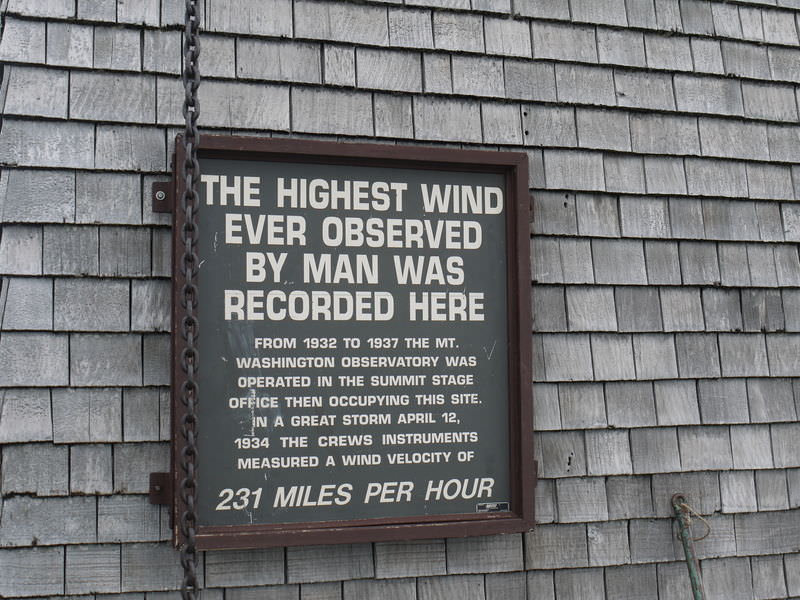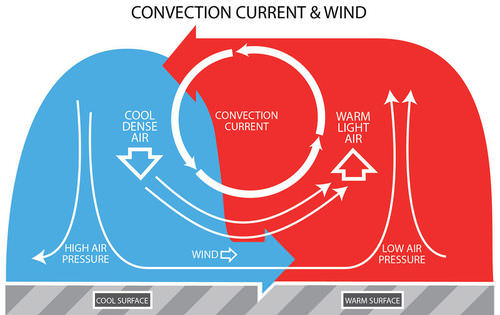10.15大气环流
章节大纲
-
Where can you go to experience wind?
::你到哪里去才能体验风?Wind is one of the most obviously dynamic features of our dynamic planet . For a long time Mt. Washington in New Hampshire was known as the windiest place on Earth. It no longer is called that, but it's still plenty windy. A wind speed of 231 miles per hour was recorded on the mountain in April 1934. In a 200 mph wind, you would not be able to stand up. Temperatures due to wind chill would be outrageously cold!
::风是地球上最明显的动态特征之一。 在新罕布什尔的华盛顿山长期以来被称为地球上最风的风景。 它不再被称为风景最强的地方, 但它仍然充斥着风景。 1934年4月, 山上记录了每小时231英里的风速。 在200米的风中, 你无法站起来。 风寒造成的温度会非常寒冷!Atmospheric Circulation
::大气循环Wind is just moving air. You can't really see it. Whether it’s a gentle breeze or strong wind, you are most aware of air when it moves ( Figure ). You can feel its molecules press against you. You can see things, like dirt and leaves, moving in the wind. And you can see object moving, like flags and trees, as a result of the wind.
::风只是在移动空气。 你无法真正看到它。 无论它是一个温和的微风还是强烈的风, 当它移动的时候,你最了解空气(图 ) 。 你可以感觉到它的分子会与你对立。你可以看到东西,比如泥土和叶子,在风中移动。你可以看到物体,比如旗帜和树木,在风中移动。How can you tell the wind is blowing in these photos?
::你怎么看出来这些照片里是风吹的?Why Air Moves
::为什么空中移动Air movement takes place in the . This is the lowest layer of the atmosphere . Air moves because of differences in heating. These differences create convection currents and winds ( Figure ).
::空气流动发生在 . 这是大气中最低层。 空气移动是因为取暖的不同。 这些差异产生了对流流流和风( 图 ) 。- Air in the troposphere is warmer near the ground. The warm air rises because it is light. The light, rising air creates an area of low air pressure at the surface.
::对流层中的空气在地面附近更暖和,温暖空气因为是光而上升。光,不断上升的空气在表面形成低气压区域。
- The rising air cools as it reaches the top of the troposphere. The air gets denser, so it sinks to the surface. The sinking, heavy air creates an area of high air pressure near the ground.
::上升的空气在到达对流层顶部时会冷却。空气密度会增加,因此会沉到地表。沉降的重空气在地面附近形成高气压区。
- Air always flows from an area of higher pressure to an area of lower pressure. Air flowing over Earth’s surface is called wind . The greater the difference in pressure, the stronger the wind blows.
::空气总是从高压地区流向低压地区。 地球表面的空气流动被称为风。 压力差异越大,风力就越强。
Differences in air temperature cause convection currents and wind.
::空气温度的差异导致对流流流和风。Summary
::摘要- Warm air rises because it is less dense. This creates an area of low pressure.
::温暖的空气因为密度低而上升,形成低压区域。
- Cool air sinks because it is denser. This creates an area of high pressure.
::冷却的空气汇,因为它较稠密。这造成了高压区域。
- Wind blows from areas of high pressure to areas of low pressure.
::风从高压地区吹到低压地区。
Review
::回顾- Diagram and label the parts of a convection cell in the troposphere.
::对流层对流层对流细胞部件的图表和标签。
- Why does warm air rise? Why does cool air sink?
::为什么暖气会上升 为什么冷气会下沉
- What creates wind?
::是什么创造了风?
Explore More
::探索更多Use the resource below to answer the questions that follow.
::利用以下资源回答以下问题。- Where is insolation strongest?
::哪里是隔离最强?
- What type of pressure occurs at the equator? Why?
::赤道发生何种压力?为什么?
- What type of pressure occurs at the poles? Why?
::电线杆产生什么样的压力?为什么?
- What are Hadley cells?
::什么是哈德利细胞?
- How do surface winds move?
::地表风如何移动?
- What happens at the polar front?
::在极战前线会发生什么?
- How does air move differently at high altitudes?
::高空的空气移动如何不同?
- Air in the troposphere is warmer near the ground. The warm air rises because it is light. The light, rising air creates an area of low air pressure at the surface.


